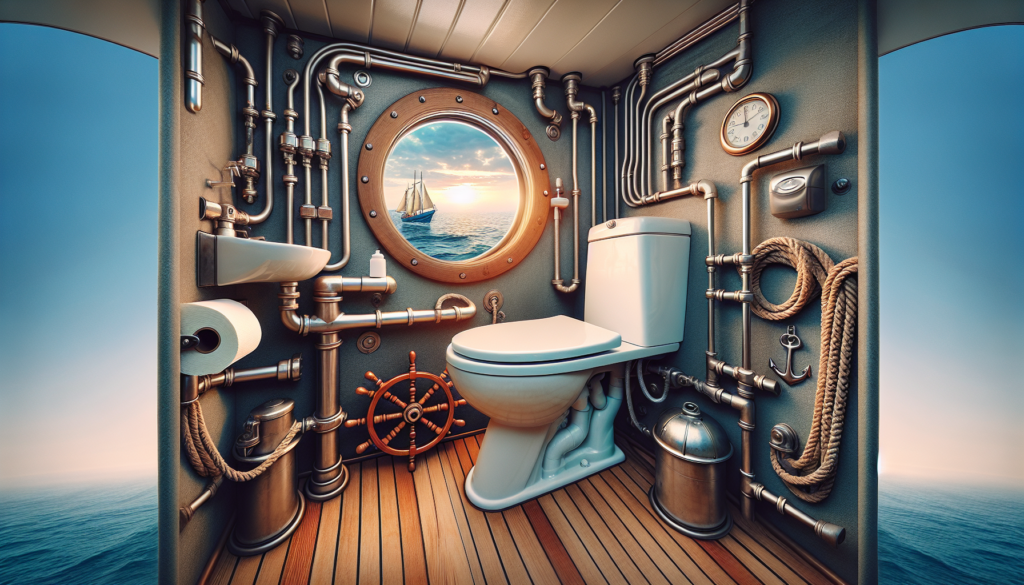Exploring the Depths of Marine Toilets: A Comprehensive Guide
Introduction
Marine toilets, often overlooked yet essential components of maritime vessels, play a crucial role in maintaining hygiene and sanitation on board. From traditional manual pump heads to modern electric models, these marine facilities have come a long way in terms of design, efficiency, and environmental impact. In this comprehensive guide, we will delve into the intricate world of marine toilets, exploring their evolution, technology, challenges, and future prospects.
Have you ever wondered how marine toilets operate in the middle of the ocean? What innovations have revolutionized onboard sanitation systems? Join us on a fascinating journey as we uncover the secrets behind these indispensable fixtures of maritime life.
The Evolution of Marine Toilets
Marine toilets, also known as heads, have a rich history dating back to ancient seafaring civilizations. Early sailors relied on rudimentary bucket systems or simple holes in the ship’s hull for waste disposal. As maritime technology advanced, so did the design of marine toilets.

In the 18th century, the invention of the flushing toilet by Alexander Cumming revolutionized onboard sanitation. This early version of the marine toilet utilized a hand pump to flush waste into the ocean. However, concerns about environmental pollution led to the development of more sophisticated systems in the 20th century.
Types of Marine Toilets
Modern marine toilets come in various types, each catering to different needs and preferences. The most common types include:
1. Manual Pump Toilets
Manual pump toilets are the simplest and most traditional type of marine toilets. Users operate a hand pump to flush waste into a holding tank or directly into the ocean. While manual pump toilets are reliable and easy to maintain, they require physical effort to operate.
2. Electric Toilets
Electric toilets are powered by onboard electrical systems and offer a more convenient flushing mechanism. These toilets are equipped with electric pumps that efficiently dispose of waste into holding tanks. Electric toilets are popular for their ease of use and consistent performance.
3. Vacuum Toilets
Vacuum toilets use suction technology to remove waste from the bowl and transport it to a holding tank. These toilets are highly efficient and require less water for flushing compared to traditional models. Vacuum toilets are commonly found on luxury yachts and cruise ships.
Challenges and Innovations
Despite their importance, marine toilets face several challenges related to water usage, waste disposal, and environmental impact. To address these issues, manufacturers and researchers have introduced innovative solutions:
1. Water-saving Technologies
Water scarcity is a major concern onboard vessels, prompting the development of water-saving technologies in marine toilets. Dual-flush systems, low-flow options, and sensor-activated toilets help reduce water consumption without compromising hygiene.
2. Waste Treatment Systems
Proper waste disposal is critical to maintaining marine ecosystems. Advanced waste treatment systems onboard vessels treat sewage before discharging it into the ocean, minimizing environmental pollution. Biological treatment processes and filtration systems are commonly used to ensure compliance with regulations.
3. Odor Control Mechanisms
Controlling odors in marine toilets is essential for maintaining a pleasant onboard environment. Manufacturers have introduced odor-neutralizing chemicals, ventilation systems, and compartmentalized designs to minimize unpleasant smells and improve user comfort.
The Future of Marine Toilets
As technology continues to evolve, the future of marine toilets looks promising with the integration of smart features, sustainable materials, and enhanced efficiency. Emerging trends in marine toilet design include:
1. Smart Toilets
Smart toilets equipped with sensors, touchless controls, and self-cleaning mechanisms are becoming increasingly popular in the marine industry. These high-tech toilets offer enhanced hygiene, convenience, and customization options for users.
2. Sustainable Materials
The use of sustainable materials such as biodegradable plastics, recycled components, and energy-efficient systems is gaining traction in marine toilet manufacturing. By prioritizing eco-friendly materials, manufacturers aim to reduce the environmental footprint of marine toilets.
3. Energy-efficient Systems
Energy-efficient systems in marine toilets, including solar-powered toilets, LED lighting, and low-power consumption components, help conserve energy and reduce operating costs. These systems contribute to a more sustainable and economical onboard environment.
Expert Opinions
We spoke to marine industry experts to gain insights into the latest developments in marine toilet technology. According to Dr. Emily Johnson, a maritime engineer specializing in onboard systems, “The integration of smart features and sustainable materials in marine toilets is reshaping the industry, offering improved functionality and environmental benefits.”
Common Misconceptions
One common misconception about marine toilets is that they directly discharge waste into the ocean. In reality, modern marine toilets are equipped with holding tanks that store sewage until it can be properly treated and disposed of in compliance with environmental regulations.
Conclusion
To wrap things up, marine toilets play a crucial role in ensuring hygiene and sanitation onboard vessels. From their humble origins to their modern-day innovations, marine toilets have undergone significant advancements to meet the evolving needs of maritime operations. By embracing sustainable practices, leveraging technology, and prioritizing user comfort, the future of marine toilets holds exciting possibilities for the maritime industry.
Whether you’re a seasoned sailor or a curious landlubber, understanding the intricacies of marine toilets sheds light on the essential systems that keep our oceans clean and our journeys safe. So next time you set sail, take a moment to appreciate the humble yet indispensable marine toilet a silent hero of maritime travel.



